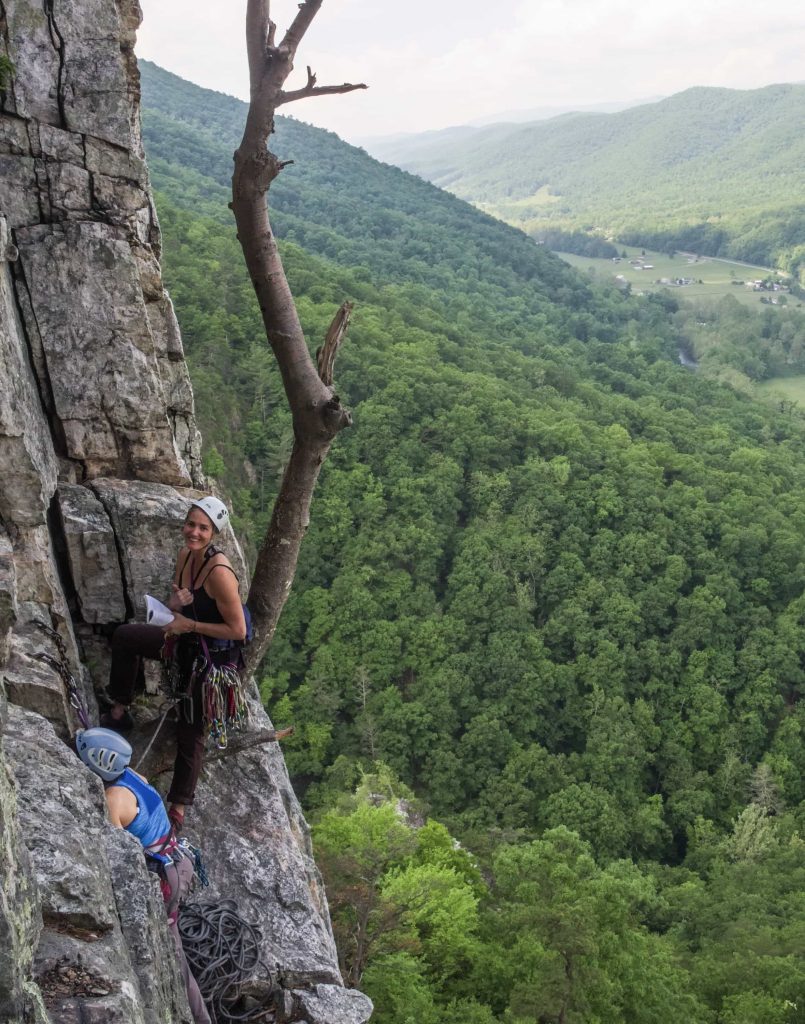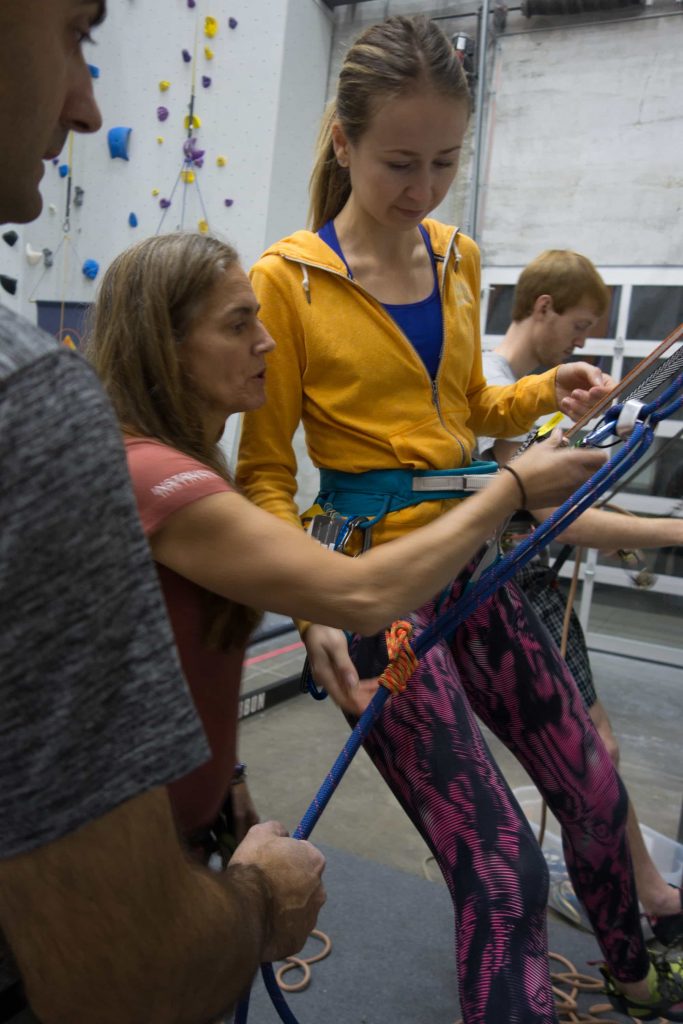By Sandy Morris:
What I’ve learned from Trad Climbing:
-Know how to get down
-Sandstone is weak
-Bailing is not an option
-Your life is more valuable than your gear
-If you can lead on Devil’s Lake slippery rock you can lead anywhere
-Know how to climb (ascend) a rope
-Be very selective who your partners are

Trad (or traditional) climbing is very different from sport climbing. There are no bolts or fixed gear in the rock. That’s the exciting part of trad climbing: you can climb anywhere your trad gear (cams, nuts, hexes, etc) can fit into the rock. Even more exciting is that there is plenty of route finding involved. Once you find the start of the route you still need to know which way the route goes (many trad routes do not go straight up like sport routes); where the best place is to build an anchor based on how far you’ve gone (and how much rope you’ve used) and where the good stance is for that anchor; and how to descend from the top. All of this information on following routes can hopefully be found in a guidebook – or sometimes on Mountain Project which can also offer topos describing each pitch.
Expect the unexpected
Even with the best beta, something unexpected can still happen. For example, I was recently leading a multi-pitch route, and because the route was difficult for me, I put a lot of gear in (that’s called ‘sewing it up’). As a result, I ran out of gear before the suggested anchor-building area. I was then forced to build a hanging belay in a very uncomfortable position, which added an additional pitch to our climb. You must stay flexible and go with whatever the rock, your ability, or your surroundings throw at you.
Another time, I was climbing the Original route (10 pitches) on Whitesides in NC on what began as a beautiful day. Out of nowhere, a storm came in when we were only halfway up. It started hailing/sleeting. Luckily, no lightning followed this bad storm, but I lost feeling in my hands and feet. My feet slipped off of everything, and the climb became treacherous. I said to my partner, “I’m OK with bailing.” I’d never been on Whitesides before, but I figured there had to be rap rings somewhere. He said, “Not an option,” because there was nothing to rappel from. While I have no idea how he finished that route, thankfully he was strong climber who knew the route well.
Lesson learned: definitely check the weather before embarking on any multi-pitch route.
Choose your partner(s) wisely
Speaking of partners, pick them well. Trad climbing is not for the faint of heart. I went on a very easy multi-pitch route with a longtime friend and sport climbing partner who totally freaked out on me at the top of the first pitch. I belayed him to the top and as he got to the anchor he looked at my gear and said, “How do you know that its strong/safe enough for both of us? OMG Sandy we are going to die!” The anchor was perfectly fine, but he was not. I never climbed multi-pitch with him again. Sometimes you never know until you are on rock with a person. Choose wisely. Don’t partner with anyone that is not safe in any way or does not have a clear head. I once was teaching someone to lead and let her lead an easy pitch of a long route in Red Rocks. I stood there belaying her while I watched my gear fly by me that she had dropped. Again: choose wisely!

Getting Started
The best way to get into trad climbing is to learn from and literally follow a strong experienced leader up outdoor trad routes, which is what I did. By watching a good leader and cleaning their gear you can learn a lot. Analyze what gear they used during their ascent, and more specifically, how it is placed in the rock and if they extend the sling or not. Ask questions if you don’t understand why they did something. Watch how they manage the rope. Look at the decisions they make, and if they stay calm. All good lessons to learn.
Like all types of climbing, trad can be super fun and rewarding. Knowing what you are getting into, staying safe, calm, and in control can keep you alive. Have fun out there! – Sandy
Sandy Morris is a professional photographer and has been climbing for over 17 years and teaching the people how to climb for over 7 years. Morris takes her nearly two decades of climbing experience from all over the world into teaching the Gym to Crag series at First Ascent Avondale, which covers the basics of outdoor climbing including cleaning/building anchors, rappelling and choosing/knowing your gear.
